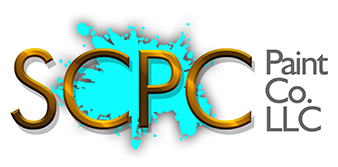Month: May 2025
The Profitable ROI of a Professional Exterior Paint Job
Investing in a quality exterior paint job should not be viewed as a mere cosmetic improvement; it’s a strategic decision for homeowners aiming to enhance their property’s long-term value. On the other hand, there is a proven return on investment if your goal is to prepare your house for sale.
Yes, the ROI claims for exterior painting are supported by reputable sources. Here’s a summary of what the search results indicate:
Return on Investment (ROI):
HomeGain (2012) and HomeLight (2019) surveys found that exterior painting yields a 51%-55% return on investment.
iProperty Management suggests an even higher ROI of around 152% for professional exterior painting.
Angi estimates an ROI of around 50%.
Impact on Curb Appeal and Sales:
The National Association of Realtors (2019 survey) found that 66% of real estate professionals agree exterior paint is essential for curb appeal and a project homeowners should complete before listing.
The most immediate return is the dramatic boost in curb appeal. In today’s competitive real estate market, first impressions are paramount. A meticulously painted exterior creates a positive initial impact, signaling potential buyers that the home has been well-maintained and cared for.
Fresh exterior paint can translate directly into higher offers and a quicker sale, often exceeding the initial investment in the painting project. Think of it as an essential pre-sale enhancement, akin to staging the interior. A well-painted exterior helps your property stand out from the competition, capturing attention and generating interest.
However, the financial benefits extend beyond the point of sale. Quality exterior paint acts as a crucial protective barrier against harsh elements. Sun exposure can cause fading and damage to siding, while rain and moisture can lead to rot, mildew, and structural issues.
Properly applied high-quality paint protects the vulnerable surfaces, significantly prolonging their lifespan and preventing costly future repairs. This preventative maintenance is a substantial long-term savings, safeguarding your investment against the weather’s inevitable wear and tear. Choosing durable, weather-resistant paints and ensuring professional application techniques maximize this protective advantage.
Furthermore, a well-maintained exterior contributes to the overall pride of ownership. A beautifully painted home enhances the neighborhood aesthetic and provides a sense of satisfaction and well-being. By choosing quality materials and professional painters, you can unlock your home’s full potential and realize a tangible return that makes this project a wise and valuable undertaking.
What Type of Caulk Is Recommended for Sealing Cracks in Stucco?
Different caulk types are suggested for sealing stucco cracks because each offers distinct benefits.
Acrylic Latex Caulk: Acrylic Latex Caulk works best to repair minor and hairline cracks in stucco finish coats. The caulk works well for application purposes while matching the stucco texture perfectly and allowing for subsequent painting.
Polyurethane Caulk: This caulk type stands out for its exceptional durability, flexibility, and top-notch water-resistant capabilities. It performs best on large cracks and where stucco connects with materials such as windows and doors.
Elastomeric Caulk: This type receives praise for its flexibility and ability to fill larger cracks and voids.
For best results, consider the following factors when choosing a caulk:
– Take into account direct exposure to the sun or weather.
– Evaluate where the crack exists on the finish coat or within joints or corners. This impacts the elasticity needed.
– Consider the size of the crack from hairline to substantial gaps. Make sure to use the appropriate caulk to seal the damaged area.
